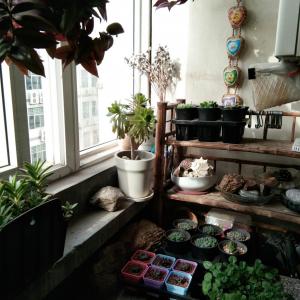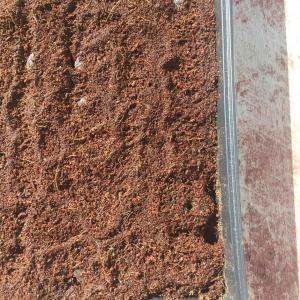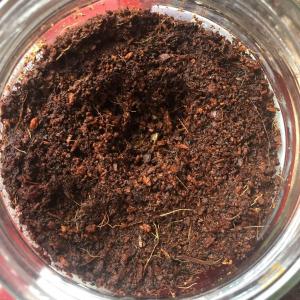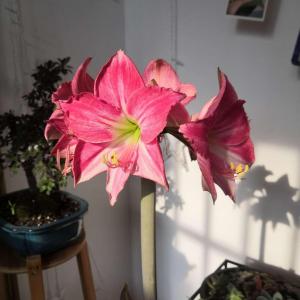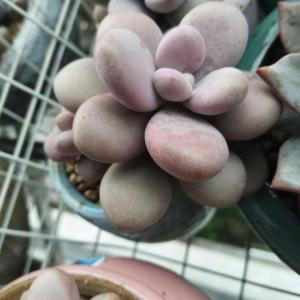文章
Miss Chen
2018年03月30日

Description: This perennial wildflower is 2-4' tall and unbranched, except near the apex where the flowers occur. The central stem is light green, terete, glabrous, and often glaucous. At intervals along this stem, there are whorls of 3-8 leaves; 1 or 2 alternate leaves may occur along the upper portion of the stem. These leaves are up to 6" long and 1" across, narrowly ovate, smooth along the margins, and sessile. The upper surface of each leaf is medium to dark green and glabrous, while the lower surface is a lighter shade of green with finely short-pubescent hairs along the veins (a 10x hand lens may be necessary to see these minute hairs). The veins of the leaves are parallel. The upper stem terminates in 1-5 (rarely up to 20) yellow-orange to red-orange flowers on long stalks. Each of these stalks nods downward at its apex. Some stalks may have 1 or 2 leafy bracts that resemble the leaves, except they are smaller in size. Each trumpet-shaped flower is about 2½" long and across, consisting of 6 tepals, 6 stamens with red anthers, and a central pistil. The throat of the flower becomes yellow and it has purple dots. The tips of the tepals curve backward, but they don't extend to the base of the flower. The anthers and style of each flower are exerted only slightly from the corolla (the 6 tepals). The blooming period occurs from late spring to mid-summer and lasts about 3 weeks. There is no noticeable floral scent. Each fertile flower is replaced by an oblongoid seed capsule that is about 2" long. Each seed capsule is divided into 3 cells; within each cell, there is a stack of large flattened seeds. The root system consists of a scaly corm with fibrous roots. This wildflower reproduces by seed or from offsets of the corms.
Cultivation: The preference is dappled sunlight or partial sun, moist to mesic conditions, and a rich loamy or slightly sandy soil. The number of flowers on each plant is variable.
Range & Habitat: Canada Lily has not been found in Illinois as either a native plant or an escaped cultivated plant. However, it occurs as a native plant in Indiana, thus it is possible that this species may establish itself in Illinois in the future. In Indiana and other eastern states, Canada Lily is found in open woodlands, wooded slopes, savannas, woodland openings, and moist meadows. Like other Lilium spp. (lilies), it is cultivated in gardens because of the large showy flowers.
Faunal Associations: The floral nectar attracts large butterflies, particularly Speyeria cybele (Great Spangled Fritillary) and various Swallowtail butterflies. Halictid bees (e.g., Lasioglossum spp.) collect pollen from the flowers, but they are ineffective at cross-pollination because of their small size. The caterpillars of Papaipema nebris (Common Borer Moth), Papaipema cataphracta (Burdock Borer Moth), and Papaipema cerina (Golden Borer Moth) bore through the stems of native Lilium spp. (lilies). The last of these three species is oligophagous (specialist feeder). Other insects that feed on native lilies include Acrolepiopsis incertella (Carrion Flower Moth; caterpillars bore into corms or stems of lilies), Merodon equestris (Narcissus Bulb Fly; maggots feed on corms), and the introduced Lilioceris lilii (Lily Leaf Beetle; feeds on leaves). The Lily Leaf Beetle occurs in some northeastern states, but it has not been observed in Illinois thus far. Deer, rabbits, and other mammalian herbivores readily browse on the foliage of native Lilies, while voles and chipmunks eat the corms.

Photographic Location: A garden in Urbana, Illinois.
Comments: This attractive lily is similar to other lilies with orange flowers, including Lilium superbum (Turk's Cap Lily), Lilium michiganense (Michigan Lily), and the introduced Lilium lancifolium (Tiger Lily). Like the flowers of Canada Lily, the flowers of Michigan Lily and Turk's Cap Lily often nod downward. However, the tepal tips of Michigan Lily curve back to the base of the flower, while the tepal tips of Turk's Cap Lily curve back and extend behind the base of the flower. The tepal tips of Canada Lily, in contrast, curve back only a little and remain in front of the base of the flower. The introduced Tiger Lily, in contrast to these native lilies, has dark bulbets in the axils of its leaves along the central stem, and its leaves are alternate (rather than whorled). Other orange-flowered lilies, whether native or introduced, typically have erect flowers. Of these various species, you are most likely to encounter the Michigan Lily in the natural areas of Illinois, although the Tiger Lily has become increasingly common.
Cultivation: The preference is dappled sunlight or partial sun, moist to mesic conditions, and a rich loamy or slightly sandy soil. The number of flowers on each plant is variable.
Range & Habitat: Canada Lily has not been found in Illinois as either a native plant or an escaped cultivated plant. However, it occurs as a native plant in Indiana, thus it is possible that this species may establish itself in Illinois in the future. In Indiana and other eastern states, Canada Lily is found in open woodlands, wooded slopes, savannas, woodland openings, and moist meadows. Like other Lilium spp. (lilies), it is cultivated in gardens because of the large showy flowers.
Faunal Associations: The floral nectar attracts large butterflies, particularly Speyeria cybele (Great Spangled Fritillary) and various Swallowtail butterflies. Halictid bees (e.g., Lasioglossum spp.) collect pollen from the flowers, but they are ineffective at cross-pollination because of their small size. The caterpillars of Papaipema nebris (Common Borer Moth), Papaipema cataphracta (Burdock Borer Moth), and Papaipema cerina (Golden Borer Moth) bore through the stems of native Lilium spp. (lilies). The last of these three species is oligophagous (specialist feeder). Other insects that feed on native lilies include Acrolepiopsis incertella (Carrion Flower Moth; caterpillars bore into corms or stems of lilies), Merodon equestris (Narcissus Bulb Fly; maggots feed on corms), and the introduced Lilioceris lilii (Lily Leaf Beetle; feeds on leaves). The Lily Leaf Beetle occurs in some northeastern states, but it has not been observed in Illinois thus far. Deer, rabbits, and other mammalian herbivores readily browse on the foliage of native Lilies, while voles and chipmunks eat the corms.

Photographic Location: A garden in Urbana, Illinois.
Comments: This attractive lily is similar to other lilies with orange flowers, including Lilium superbum (Turk's Cap Lily), Lilium michiganense (Michigan Lily), and the introduced Lilium lancifolium (Tiger Lily). Like the flowers of Canada Lily, the flowers of Michigan Lily and Turk's Cap Lily often nod downward. However, the tepal tips of Michigan Lily curve back to the base of the flower, while the tepal tips of Turk's Cap Lily curve back and extend behind the base of the flower. The tepal tips of Canada Lily, in contrast, curve back only a little and remain in front of the base of the flower. The introduced Tiger Lily, in contrast to these native lilies, has dark bulbets in the axils of its leaves along the central stem, and its leaves are alternate (rather than whorled). Other orange-flowered lilies, whether native or introduced, typically have erect flowers. Of these various species, you are most likely to encounter the Michigan Lily in the natural areas of Illinois, although the Tiger Lily has become increasingly common.
0
0
文章
Miss Chen
2018年03月27日

Description: This biennial wildflower forms a low rosette of leaves about 8-12" across during the first year. During the second year, it bolts and becomes 2-7' tall. Usually, this wildflower is unbranched, although sometimes ascending lateral branches develop along the upper one-third of a large plant. The central stem (and any lateral stems) is rather stout, terete, and light green to pale purple; it is usually hairy along the lower half of its length, becoming hairless and slightly glaucous along the upper half. The alternate leaves are up to 6" long and 2" across, becoming gradually smaller as they ascend the stem; they are pinnatifid with pointed irregular lobes and dentate along their margins. The upper surfaces of these leaves are medium green and often sparsely hairy; their lower surfaces are pale green and hairy, particularly along the midribs.
The basal leaves are similar to the alternate leaves, except they tend to be larger in size and more wide toward their tips (narrowly obovate to obovate). Young developing basal leaves are usually very hairy on both their upper and lower surfaces. The central stem (and any lateral stems) terminates in an elongated panicle of flowerheads about 6-12" long and 2-4" across. The branches of the panicle are light green to reddish purple, terete, and usually hairless. Each flowerhead is about 1/3" (8-10 mm.) across when fully open, consisting of 12-25 ray florets, no disk florets, and light green to purple floral bracts that are arranged in about 3 series around its base (involucre); this base is about 2/3–3/4" (15-20 mm.) long. The rays of the flowerhead are colored salmon to brick-red and their tips are truncate and finely toothed. The outer floral bracts are shorter than the inner floral bracts.

The blooming period occurs from mid-summer to early fall and usually lasts about 3 weeks. Individual flowerheads last only a single day, blooming for only a few hours on sunny days. After only a short period of time, individual flowerheads are replaced by small black achenes with tufts of white hair. Each achene is 4-5 mm. long, ellipsoid-oblanceoloid in shape, and flattened; the tuft of white hairs is attached to the achene by a slender white beak about 2.5–3.5 mm. long. These achenes are distributed by the wind. The root system consists of a taproot. This wildflower reproduces by reseeding itself.
Cultivation: The preference is partial sun, mesic to dry conditions, and somewhat acidic sandy or rocky soil. The size of individual plants is highly variable, depending on moisture levels and soil fertility.

Range & Habitat: Red-Flowered Wild Lettuce is a rare native plant in Illinois and it is state-listed as 'endangered.' Thus far, this species has been collected from a single county in southern Illinois (see Distribution Map). Because this species can be confused with other Lactuca spp., it may occur in other areas of the state. Outside of Illinois, this species is also uncommon. Habitats include upland rocky woodlands, woodland openings, woodland borders, upland savannas, sandstone glades, pastures, and abandoned fields. These habitats also include sandy areas. Red-Flowered Wild Lettuce prefers some disturbance to reduce the abundance of woody vegetation.

Faunal Associations: Little is known about floral-faunal relationships for this particular species. The flowerheads are probably cross-pollinated by various bees (medium- to small-sized), which offer nectar and pollen. In general, the caterpillars of some moths feed on Lactuca spp. (Wild Lettuce species), including Autographa precationis (Common Looper Moth), Grammia virgo (Virgin Tiger Moth), and Cucullia intermedia (Intermediate Cucullia). The caterpillars of the last moth species feed on the flowerheads. Other insect feeders include Thrips physapus (Dandelion Thrips) and several aphid species: Hyperomyza lactucae (Currant-Sowthistle Aphid), Nasonovia ribisnigri (Currant-Lettuce Aphid), Pemphigus bursarius (Lettuce Root Aphid), Prociphilus erigeronensis (White Aster Root Aphid), Uroleucon ambrosiae (Brown Ambrosia Aphid), Uroleucon gravicorne (Aphid sp.), Uroleucon pseudambrosiae (False Ambrosia Aphid), Uroleucon rudbeckiae (Golden Glow Aphid), and Uroleucon sonchella (Sowthistle Aphid). Among vertebrate animals, the Eastern Goldfinch eats the seeds, while White-Tailed Deer occasionally graze on the foliage of Lactuca spp.
Photographic Location: The wildflower garden of the webmaster in Urbana, Illinois.

Comments: This unusual species has been sadly neglected from many wildflower field guides. Although it has an extensive range in the eastern half of the United States, Red-Flowered Wild Lettuce appears to be uncommon to rare in most areas. The preceding description applies to var. sanguinea, rather the typical variety. In other areas of its range, Lactuca hirsuta may have yellow flowerheads and the hairiness of its stems and leaves can be variable (from nearly hairless to very hairy). Red-Flowered Wild Lettuce can be easily confused with the more common Lactuca canadensis (Common Wild Lettuce), which is itself a rather variable species. Generally, Common Wild Lettuce has flowerheads that are pale yellow to dull orange, flowerheads with shorter bases (involucres) that are ½" or less, and shorter achenes (less than 4 mm. long). Common Wild Lettuce is usually completely glabrous (except for some hairs along the lower midribs of its leaves), and its upper stems and floral branches are usually less purple. Another species, Lactuca biennis (Tall Blue Lettuce), has light blue to cream-colored flowerheads and its achenes have shorter beaks and tufts of tawny or gray hair, rather than white hair. These different Lactuca spp. cannot be identified reliably unless the flowerheads or tufted achenes are available for examination. Another common name of Lactuca hirsuta is Hairy Wild Lettuce.
The basal leaves are similar to the alternate leaves, except they tend to be larger in size and more wide toward their tips (narrowly obovate to obovate). Young developing basal leaves are usually very hairy on both their upper and lower surfaces. The central stem (and any lateral stems) terminates in an elongated panicle of flowerheads about 6-12" long and 2-4" across. The branches of the panicle are light green to reddish purple, terete, and usually hairless. Each flowerhead is about 1/3" (8-10 mm.) across when fully open, consisting of 12-25 ray florets, no disk florets, and light green to purple floral bracts that are arranged in about 3 series around its base (involucre); this base is about 2/3–3/4" (15-20 mm.) long. The rays of the flowerhead are colored salmon to brick-red and their tips are truncate and finely toothed. The outer floral bracts are shorter than the inner floral bracts.

The blooming period occurs from mid-summer to early fall and usually lasts about 3 weeks. Individual flowerheads last only a single day, blooming for only a few hours on sunny days. After only a short period of time, individual flowerheads are replaced by small black achenes with tufts of white hair. Each achene is 4-5 mm. long, ellipsoid-oblanceoloid in shape, and flattened; the tuft of white hairs is attached to the achene by a slender white beak about 2.5–3.5 mm. long. These achenes are distributed by the wind. The root system consists of a taproot. This wildflower reproduces by reseeding itself.
Cultivation: The preference is partial sun, mesic to dry conditions, and somewhat acidic sandy or rocky soil. The size of individual plants is highly variable, depending on moisture levels and soil fertility.

Range & Habitat: Red-Flowered Wild Lettuce is a rare native plant in Illinois and it is state-listed as 'endangered.' Thus far, this species has been collected from a single county in southern Illinois (see Distribution Map). Because this species can be confused with other Lactuca spp., it may occur in other areas of the state. Outside of Illinois, this species is also uncommon. Habitats include upland rocky woodlands, woodland openings, woodland borders, upland savannas, sandstone glades, pastures, and abandoned fields. These habitats also include sandy areas. Red-Flowered Wild Lettuce prefers some disturbance to reduce the abundance of woody vegetation.

Faunal Associations: Little is known about floral-faunal relationships for this particular species. The flowerheads are probably cross-pollinated by various bees (medium- to small-sized), which offer nectar and pollen. In general, the caterpillars of some moths feed on Lactuca spp. (Wild Lettuce species), including Autographa precationis (Common Looper Moth), Grammia virgo (Virgin Tiger Moth), and Cucullia intermedia (Intermediate Cucullia). The caterpillars of the last moth species feed on the flowerheads. Other insect feeders include Thrips physapus (Dandelion Thrips) and several aphid species: Hyperomyza lactucae (Currant-Sowthistle Aphid), Nasonovia ribisnigri (Currant-Lettuce Aphid), Pemphigus bursarius (Lettuce Root Aphid), Prociphilus erigeronensis (White Aster Root Aphid), Uroleucon ambrosiae (Brown Ambrosia Aphid), Uroleucon gravicorne (Aphid sp.), Uroleucon pseudambrosiae (False Ambrosia Aphid), Uroleucon rudbeckiae (Golden Glow Aphid), and Uroleucon sonchella (Sowthistle Aphid). Among vertebrate animals, the Eastern Goldfinch eats the seeds, while White-Tailed Deer occasionally graze on the foliage of Lactuca spp.
Photographic Location: The wildflower garden of the webmaster in Urbana, Illinois.

Comments: This unusual species has been sadly neglected from many wildflower field guides. Although it has an extensive range in the eastern half of the United States, Red-Flowered Wild Lettuce appears to be uncommon to rare in most areas. The preceding description applies to var. sanguinea, rather the typical variety. In other areas of its range, Lactuca hirsuta may have yellow flowerheads and the hairiness of its stems and leaves can be variable (from nearly hairless to very hairy). Red-Flowered Wild Lettuce can be easily confused with the more common Lactuca canadensis (Common Wild Lettuce), which is itself a rather variable species. Generally, Common Wild Lettuce has flowerheads that are pale yellow to dull orange, flowerheads with shorter bases (involucres) that are ½" or less, and shorter achenes (less than 4 mm. long). Common Wild Lettuce is usually completely glabrous (except for some hairs along the lower midribs of its leaves), and its upper stems and floral branches are usually less purple. Another species, Lactuca biennis (Tall Blue Lettuce), has light blue to cream-colored flowerheads and its achenes have shorter beaks and tufts of tawny or gray hair, rather than white hair. These different Lactuca spp. cannot be identified reliably unless the flowerheads or tufted achenes are available for examination. Another common name of Lactuca hirsuta is Hairy Wild Lettuce.
0
0
文章
Miss Chen
2018年03月19日

Description: This herbaceous plant is a monocarpic perennial. It persists as a rosette of 3-30 basal leaves for 5-15 years (or more), finally bolting as a flowering plant that becomes 3-8' tall for a single season, and then dying. The basal leaves are up to 14" long and 4" across; they are oblong-elliptic to broadly oblong-elliptic in shape and smooth along their margins. The upper surfaces of the basal leaves are medium green and glabrous with prominent central veins; they are deciduous. The central stem of a flowering plant is light green to purple, glabrous, terete (circular in cross-section), rather stout, and unbranched. Along its entire length, there are whorls of 4-5 leaves (rarely more) that become gradually smaller in size as they ascend the central stem. Individual whorled leaves are 3-12" long and ¾-3" across; they are oblong-elliptic, oblong-lanceolate, or oblong-oblanceolate in shape with smooth margins. The upper surfaces of these leaves are dark green and glabrous with prominent central veins; they are also deciduous. The central stem terminates in a panicle of flowers up to 2' long (typically 50-100 flowers per panicle). This panicle is narrowly pyramidal in shape with spreading to ascending lateral branches. The terminal branches produce clusters of 2-6 flowers each on pedicels ¾-2" long.
Each flower is ¾-1¼" across, consisting of a shallow corolla with 4-5 spreading petaloid lobes, a shallow calyx with 4-5 spreading lobes, 4-5 stamens, and a superior ovary with a single style. Usually, the flowers are divided into 4 parts, rather than 5. The corolla lobes are oblong-lanceolate or oblong-elliptic in shape; they are mostly greenish white with purple specks or streaks, although their bases may be tinted pale yellow or pale pink. Toward the middle of each corolla lobe, there is a conspicuous nectar pad that is heavily fringed. The bases of these nectar pads are surrounded by rings of green. The calyx and its lobes are medium green and glabrous; individual lobes are linear-lanceolate and up to ½" long. The superior ovary is light green. The peduncle, lateral branches, and pedicels of the inflorescence are light green to purple, glabrous, and terete. At locations where there are divergent branches within the inflorescence, there are pairs of leafy bracts about 1-3" long that are linear-lanceolate or linear-oblong in shape. The blooming period occurs from late spring to early summer, lasting about 3 weeks. The flowers within a panicle bloom at about the same time. Individual plants in a colony have a tendency to bloom synchronically (during the same year at the same time), which facilitates cross-pollination of the flowers. Afterwards, the flowers are replaced by ovoid seed capsules about ½-¾" in length; these capsules are strongly beaked from the persistent styles. At maturity, these capsules become dark brown and split open to release their seeds. Each capsule contains 4-14 dark brown seeds that are crescent-shaped and winged. The root system consists of a fleshy taproot.

Cultivation: The preference is full sun to light shade, mesic to dry-mesic conditions, and calcareous soil that is loamy, rocky, or sandy. The seeds require a dormant period with cool moist stratification in order to germinate. Because this plant persists as a rosette of basal leaves for several years, it is slow to develop, and its seeds are not often available commercially. Problems with disease organisms or insect pests rarely occur.
Range & Habitat: The native American Columbo is occasional in the southern half of Illinois, rare (or possibly extirpated) in NE Illinois, and absent from the rest of the state (see Distribution Map). Illinois lies along the NW range limit of this species. Habitats include upland savannas, upland woodlands, wooded slopes, limestone and sandstone glades, woodland openings, and small meadows in upland wooded areas. In areas near southern Lake Michigan, this plant occurs in similar habitats with calcareous sand. American Columbo is often associated with upland oak trees and such ferns as Asplenium platyneuron (Ebony Spleenwort) and Polystichum acrostichoides (Christmas Fern). It is found in higher quality natural areas.
Faunal Associations: The flowers are cross-pollinated primarily by such long-tongued bees as honeybees, bumblebees, and Anthophorine bees (Anthophora spp.); these insects obtain mostly nectar from the flowers. Aside from these pollinators, there are few records of floral-faunal relationships for American Columbo. The basal leaves of more western species in the same genus, sometimes referred to as 'Elkweed,' are eaten occasionally by elk and other hoofed mammalian herbivores. However, evidence of such browsing hasn't been observed by the author for the more eastern American Columbo.

Photographic Location: A rocky wooded slope in southern Illinois and an upland woodland in east-central Illinois.
Comments: American Columbo is an unusual native plant that has a tall striking appearance when it finally bolts and blooms. The greenish white flowers with purplish specks or streaks have an odd appearance; they are produced in great abundance during the blooming period. Even though the flowers of American Columbo have conspicuous nectar pads like some species in the Lily family (Liliaceae), such as Melanthium virginicum (Virginia Bunchflower) and Veratrum woodii (False Hellebore), it is not closely related to these latter species (the former species is a dicot, while the latter are monocots). The Frasera genus is a small group of plants that are found primarily in western North America. American Columbo is the only eastern species, making flowering plants easy to identity. Immature plants consisting of basal leaves, however, can be confused with the immature stage of False Hellebore. An obsolete scientific name for American Columbo is Swertia caroliniensis.
Each flower is ¾-1¼" across, consisting of a shallow corolla with 4-5 spreading petaloid lobes, a shallow calyx with 4-5 spreading lobes, 4-5 stamens, and a superior ovary with a single style. Usually, the flowers are divided into 4 parts, rather than 5. The corolla lobes are oblong-lanceolate or oblong-elliptic in shape; they are mostly greenish white with purple specks or streaks, although their bases may be tinted pale yellow or pale pink. Toward the middle of each corolla lobe, there is a conspicuous nectar pad that is heavily fringed. The bases of these nectar pads are surrounded by rings of green. The calyx and its lobes are medium green and glabrous; individual lobes are linear-lanceolate and up to ½" long. The superior ovary is light green. The peduncle, lateral branches, and pedicels of the inflorescence are light green to purple, glabrous, and terete. At locations where there are divergent branches within the inflorescence, there are pairs of leafy bracts about 1-3" long that are linear-lanceolate or linear-oblong in shape. The blooming period occurs from late spring to early summer, lasting about 3 weeks. The flowers within a panicle bloom at about the same time. Individual plants in a colony have a tendency to bloom synchronically (during the same year at the same time), which facilitates cross-pollination of the flowers. Afterwards, the flowers are replaced by ovoid seed capsules about ½-¾" in length; these capsules are strongly beaked from the persistent styles. At maturity, these capsules become dark brown and split open to release their seeds. Each capsule contains 4-14 dark brown seeds that are crescent-shaped and winged. The root system consists of a fleshy taproot.

Cultivation: The preference is full sun to light shade, mesic to dry-mesic conditions, and calcareous soil that is loamy, rocky, or sandy. The seeds require a dormant period with cool moist stratification in order to germinate. Because this plant persists as a rosette of basal leaves for several years, it is slow to develop, and its seeds are not often available commercially. Problems with disease organisms or insect pests rarely occur.
Range & Habitat: The native American Columbo is occasional in the southern half of Illinois, rare (or possibly extirpated) in NE Illinois, and absent from the rest of the state (see Distribution Map). Illinois lies along the NW range limit of this species. Habitats include upland savannas, upland woodlands, wooded slopes, limestone and sandstone glades, woodland openings, and small meadows in upland wooded areas. In areas near southern Lake Michigan, this plant occurs in similar habitats with calcareous sand. American Columbo is often associated with upland oak trees and such ferns as Asplenium platyneuron (Ebony Spleenwort) and Polystichum acrostichoides (Christmas Fern). It is found in higher quality natural areas.
Faunal Associations: The flowers are cross-pollinated primarily by such long-tongued bees as honeybees, bumblebees, and Anthophorine bees (Anthophora spp.); these insects obtain mostly nectar from the flowers. Aside from these pollinators, there are few records of floral-faunal relationships for American Columbo. The basal leaves of more western species in the same genus, sometimes referred to as 'Elkweed,' are eaten occasionally by elk and other hoofed mammalian herbivores. However, evidence of such browsing hasn't been observed by the author for the more eastern American Columbo.

Photographic Location: A rocky wooded slope in southern Illinois and an upland woodland in east-central Illinois.
Comments: American Columbo is an unusual native plant that has a tall striking appearance when it finally bolts and blooms. The greenish white flowers with purplish specks or streaks have an odd appearance; they are produced in great abundance during the blooming period. Even though the flowers of American Columbo have conspicuous nectar pads like some species in the Lily family (Liliaceae), such as Melanthium virginicum (Virginia Bunchflower) and Veratrum woodii (False Hellebore), it is not closely related to these latter species (the former species is a dicot, while the latter are monocots). The Frasera genus is a small group of plants that are found primarily in western North America. American Columbo is the only eastern species, making flowering plants easy to identity. Immature plants consisting of basal leaves, however, can be confused with the immature stage of False Hellebore. An obsolete scientific name for American Columbo is Swertia caroliniensis.
0
0



